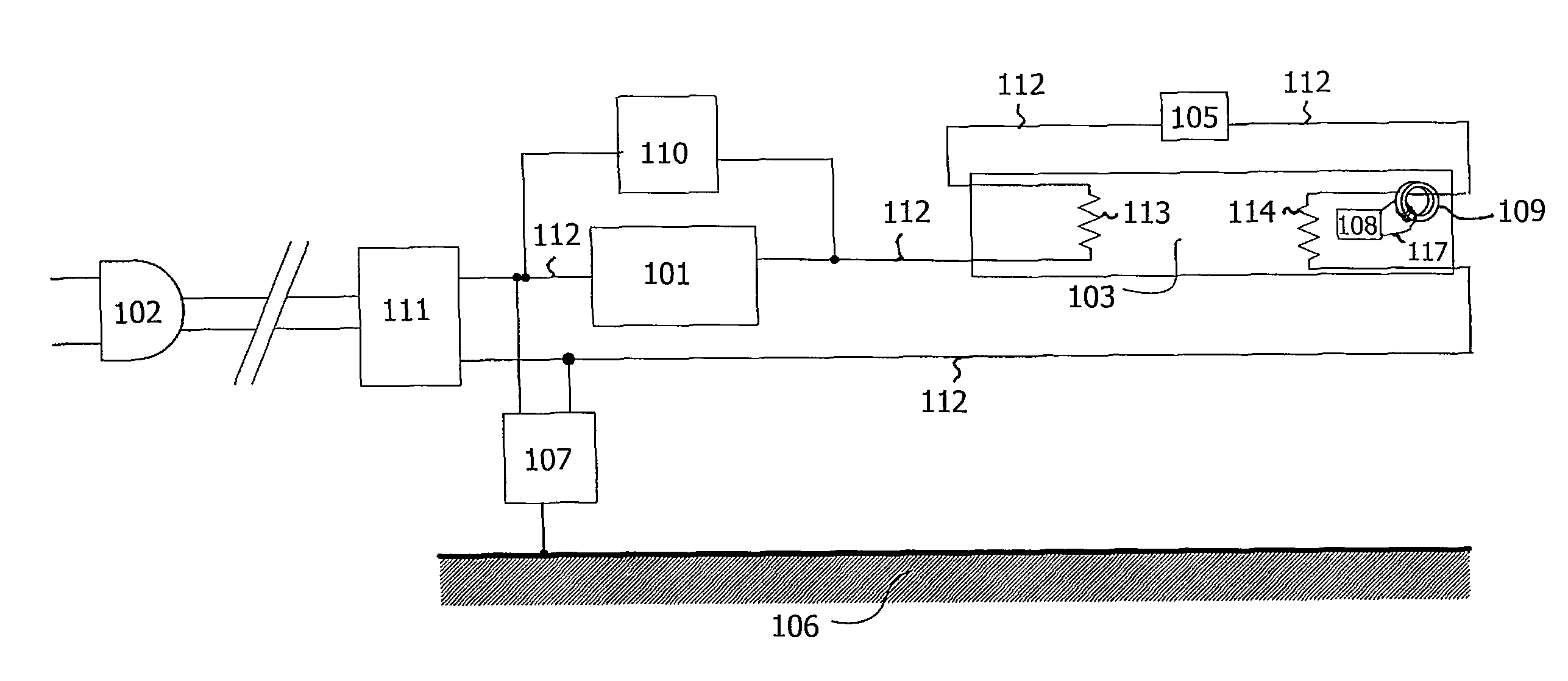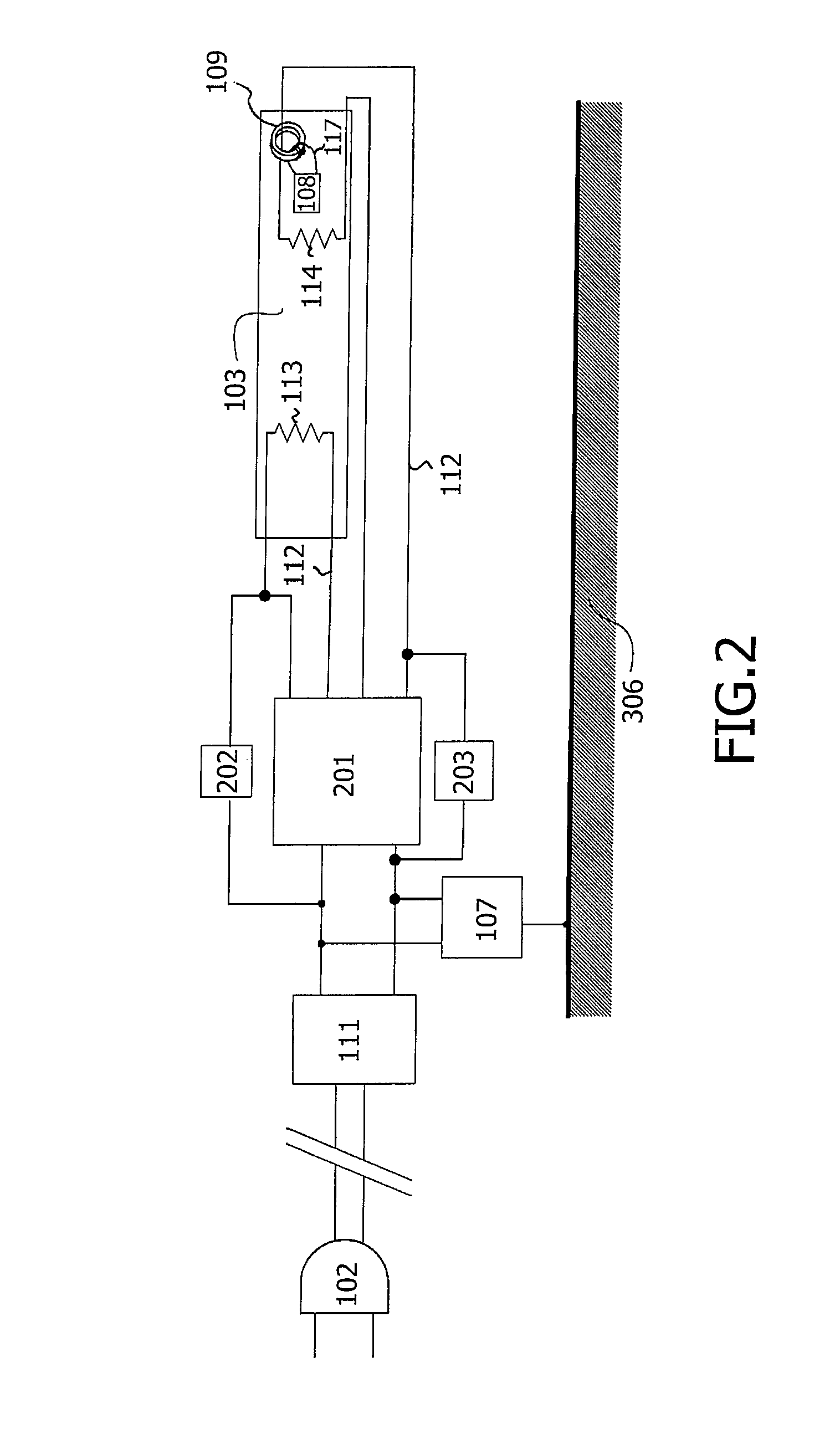Electronic lamp identification system
a technology of electronic lamps and identification systems, applied in the field of identification systems, can solve the problems of insufficient disinfection, negative effect of system operation for general illumination or special lighting purposes, and sunburn of users' skin, so as to prevent physical injury, prevent insufficient disinfection, and simple magnetic coupling.
- Summary
- Abstract
- Description
- Claims
- Application Information
AI Technical Summary
Benefits of technology
Problems solved by technology
Method used
Image
Examples
Embodiment Construction
[0036]FIG. 1 schematically shows a mercury vapor discharge lamp 103 having an identification circuit 108, and an identification system having a controller 107. The lamp 103 is connected to the power grid via connector 102, and the lamp is powered via ballast circuit 101. The ballast circuit 101 may be an electronic ballast or an electromagnetic ballast. The ballast circuit 101 is coupled in series with the electric wire 112 in one direction. The lamp 103 is, for example, a UV radiation source in a solarium, a disinfection installation lamp, or a device for medical treatment, or alternatively a visible light radiation source for general illumination purposes, or for liquid crystal display backlighting applications. In an alternative embodiment, the controller 107 is integrated into the ballast circuit 101. The ballast circuit 101 and the controller 107 are connected to the lamp 103 via an electric wire 112. The electric wire may comprise sockets, not shown in FIG. 1, as well as elect...
PUM
 Login to View More
Login to View More Abstract
Description
Claims
Application Information
 Login to View More
Login to View More - R&D
- Intellectual Property
- Life Sciences
- Materials
- Tech Scout
- Unparalleled Data Quality
- Higher Quality Content
- 60% Fewer Hallucinations
Browse by: Latest US Patents, China's latest patents, Technical Efficacy Thesaurus, Application Domain, Technology Topic, Popular Technical Reports.
© 2025 PatSnap. All rights reserved.Legal|Privacy policy|Modern Slavery Act Transparency Statement|Sitemap|About US| Contact US: help@patsnap.com



